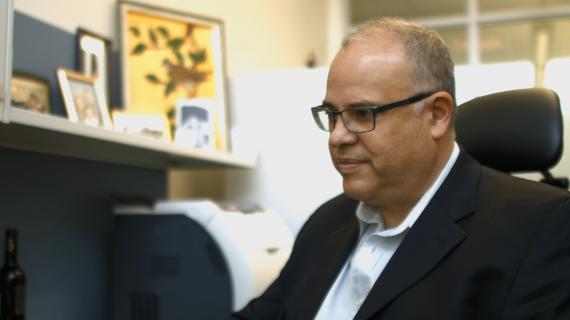
Arturo Sanchez-Azofeifa
Note: This story was originally published on the ASTech Foundation website.
Earth and Atmospheric Sciences professor Arturo Sanchez-Azofeifa has been shortlisted for an award in Outstanding Achievement In Environmental Technology And Innovation.When reflecting on what inspired him to further his interest in environmental technology, Sanchez-Azofeifa traces it back to the 1996 film Twister.
"I remember watching Twister many years ago and asking myself if the sensors they used in the movie were real," Sanchez-Azofeifa says. "The next day I went back to my office to see what was commercially available, and we realized that nothing like that really existed."
The film is a fictionalized version of a research project where a team of storm chasers attempt to learn more about a tornado by implanting an electronic sensor network into the centre of a storm to gather data. Sanchez-Azofeifa and his team at the University of Alberta work with a similar concept by leveraging a large network of ground-based sensors to learn more about the environment in real time.
"We went on to design the technology [from Twister], and when we did we found out there wasn't an appropriate platform to process that data," he says. "We had to develop the software to be able to handle the amount of information we produced."
The result is web-based platform called Enviro-Net, which is described as a bridge spanning the gap between environmental science needs and information technology tools. Enviro-Net gives professionals in a wide range of industries constant access to the information they need to complete their work.
Enviro-Net receives data directly from the network of ground-based sensors, with the possibility of widespread applications for a ground-based sensor network. As Sanchez-Azofeifa explains, individuals with any level of education can understand the content on Enviro-Net, whereas most research results are shared amongst experts. The main component of Enviro-Net's monitoring equipment is the Wireless Optical Phenology Station (ONESENSE®), which is a collection of low-powered sensors and data storage nodes that communicate back to a central location at the University of Alberta where Sanchez-Azofeifa and his colleagues can analyze the data. Through a partnership with the IBM Centre for Advanced Studies, the university leverages IBM's satellite network to gather data from the sensors.
Because of the mobility of satellites, the sensors can be placed anywhere in the world. The technology used to power Enviro-Net is quite sophisticated, and Sanchez-Azofeifa says it would be impossible to complete his work without the team of talented engineers and computing scientists at the University of Alberta. "With my work I'm more involved with applied science," Sanchez-Azofeifa explains. "The team I'm working with is made up of electrical engineers and computer scientists. They work with the computational side of everything, and my role as a leader is to be the force driving the developments."
Because of the complexity of the tools that power Enviro-Net, Sanchez-Azofeifa encourages potential partners to experience the software through a hands-on demonstration. He says experience is important to understand how the product works, and he lets the tools speak for themselves. "I believe in showing the product, so we find demonstration works best in creating alliances," Sanchez-Azofeifa says. "What we're doing in Australia, for example, is creating a strategic alliance with the Australia National Wine Producers, and we have an initiative to set up a farmer with the technology. We can actually train them and bring the technology to Australia, and we train them by showing them how it works."
Sanchez-Azofeifa says partners around the world have already installed sensors, and he believes Enviro-Net will be able to help solve universal problems such as drought. Sanchez-Azofeifa believes Enviro-Net will continue to grow with time, as the more he demonstrates his product the more corporations start to notice his work.
"Our technology is being used right now in Australia, Singapore, England, Germany, Costa Rica, Panama, Brazil, Columbia and Mexico," Sanchez-Azofeifa explains. "This small project turned into a global project really quickly!"
Faculty of Science and the ASTechs
The Alberta Science and Technology Leadership (ASTech) Foundation is a not-for-profit organization founded through an industry initiative in 1989 to showcase the substantial achievements in science and technology in Alberta and to promote the importance of these activities to social and economic benefit. To date, 24 faculty members from the University of Alberta Faculty of Science have won awards.
In addition to Sanchez-Azofeifa's nomination for Outstanding Achievement in Environmental Technology And Innovation, other 2015 nominees from the Faculty of Science include Robert Wolkow for Outstanding Leadership in Alberta Technology and Todd Lowary for Outstanding Leadership in Alberta Science. The winners of the 2015 ASTechs will be announced Friday, November 6 at the awards ceremony in Calgary.